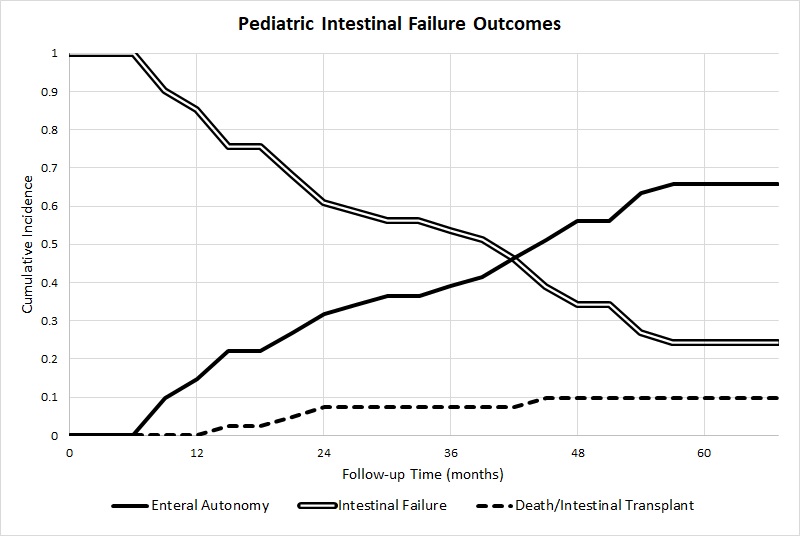F. Hebal1, E. Port1, K. Barsness1,2, J. Grabowski1,2 1Ann and Robert H Lurie Children’s Hospital of Chicago,Pediatric Surgery,Chicago, IL, USA 2Feinberg School Of Medicine – Northwestern University,Surgery,Chicago, IL, USA
Introduction: Bowel management clinic outcomes are not traditionally classified based on diagnosis. A variety of factors associated with the etiology of incontinence, however, may influence symptom severity, treatment selection, and successful outcomes. We hypothesized that treatment results vary by underlying condition. The purpose of this study was to assess longitudinal continence results among a diverse population of children with fecal incontinence treated in a specialized bowel management clinic.Introduction:
Methods: We conducted an IRB approved retrospective review of children with fecal incontinence treated in the bowel management clinic from 6/2015 – 6/2018. Treatment success was defined as achieving full fecal continence. As urinary continence is often affected by stool burden, our secondary outcome was urinary continence. Because the majority of patients experience a plateau in treatment outcomes after 5 consecutive visits and graduate from clinic, only patients with complete data available for at least 5 consecutive visits were included in our study cohort. Chi-square was used for analysis (p<0.05 significant).
Results: Of 98 patients with at least five consecutive visits tracked in our longitudinal outpatient database since 2015, 67 having fecal incontinence were available for analysis. Diagnoses included anorectal malformations (ARM) (n=36), Hirschsprung’s disease (HD) (n=16), and idiopathic/constipation (n=15). Overall 30% (n=20) of our patients achieved full fecal continence by their fifth clinic visit. Patients with a diagnosis of HD or idiopathic constipation had a significantly better rate of achieving stool continence compared to those with an ARM (50%, 40%, and 17%, respectively; p<0.03). The entire cohort had improved urinary continence with similarly varied continence achieved (70%, 55%, and 16%, respectively; p<0.005).
Conclusion: Children who have a regimented bowel management program have an overall improvement in fecal and urinary continence. Patients with HD or idiopathic constipation demonstrate the most dramatic improvements over consecutive visits. These data suggest that there may be a fixed deficit in those patients with an ARM that is more complicated to manage compared to those with other diagnoses. This broad difference in outcomes supports an approach focusing on individualized treatment and data driven clinical decision making in long-term management of these patients. Future investigation will explore demographic and patient-specific factors that may impact successful outcomes.









